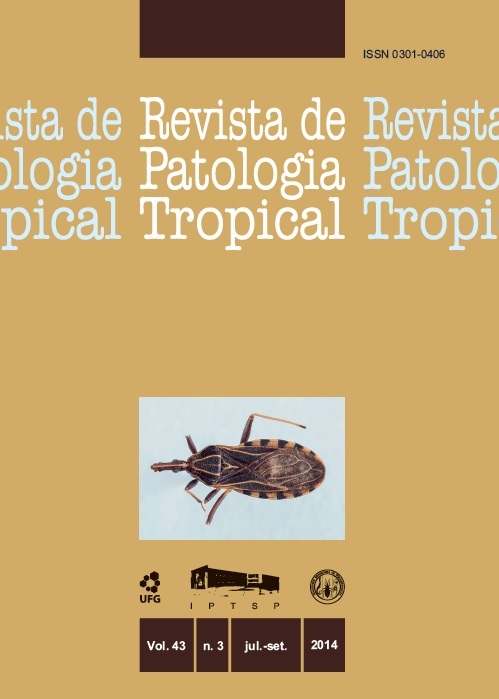MUSCA DOMESTICA (DIPTERA: MUSCIDAE) BREEDING IN VARIOUS PIG TISSUES
DOI:
https://doi.org/10.5216/rpt.v43i3.32217Keywords:
Forensic entomology, forensic indicator, vector of pathogens, postmortem indicatorAbstract
Musca domestica (L. 1758) is a cosmopolitan species that presents a high degree of association with human environments. This fly has been encountered carrying several pathogens and has been found associated with animal carcasses and human corpses in various countries. In this study, the capacity of larvae of M. domestica to breed in various pig tissues was tested. Larvae of this species were transferred to flasks containing liver, abdominal fat, meat, lung and brain tissues. The flasks were maintained in an incubator at 25 ºC ± 1 ºC, 70%± 10% humidity, and with a 12h/12h light/dark photoperiod until the emergence of the imagoes. The rates of development of larvae were assessed. The larvae did not reach adulthood in fat and liver. Comparisons between data from different tissues indicated differences in the size, weight and development of larvae of the same age. Brain and muscle were the substrates that had the lowest frequencies of emergence of imagoes. A longer time for development was observed in the brain, while shorter times were observed in lung and intestine. Lung and intestine were also the substrates from which greater numbers of imagoes emerged. Larvae in muscle presented smaller size and lower weight. Because M. domestica is capable of breeding in various tissues in the laboratory, its breeding capacity and abundance in carrion may depend on the biological and environmental conditions encountered outdoors. The influence of the factors studied when used in forensic entomology, should be taken into account, especially as an indicator of postmortem interval.
Downloads
Downloads
Published
How to Cite
Issue
Section
License
The manuscript submission must be accompanied by a letter signed by all authors stating the full name and email address, confirming that the material has not been published or is under consideration for publication elsewhere, and agreeing to transfer copyright in all media and formats for Journal of Tropical Pathology. The authors will not be paid for published articles. They are solely responsible for the content of those articles, even if the Editor holds the right to adjust them to the norms of the journal.
The reviewers will not be paid for the peer review process.

